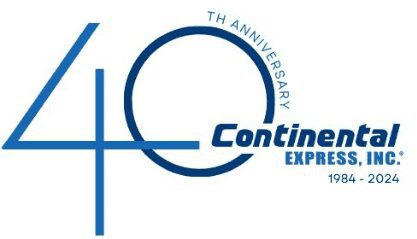The time is quickly approaching for the new Federal Electronic Logging Device (ELD) mandate. By December 19, 2019, all Continental Express drivers will be running under this new rule set.
The ELD rules apply to the majority of motor carriers and drivers who are required to maintain and record their work status. This ELD mandate does not mean the existing rules are changing, however, it does require more enforcement of the rules.
According to the Federal Motor Carrier Safety Administration (FMCSA), “The ELD rule applies to motor carriers and drivers who are required to report Records Of Duty Service (RODS). An ELD is technology that automatically records a driver’s driving time and other aspects of the hours-of-service (HOS) records. This allows for more streamlined and more accurate HOS recordkeeping. An ELD monitors a vehicle’s engine to capture data on whether the engine is running, whether the vehicle is moving, miles driven, and duration of engine operation (engine hours). With an ELD, law enforcement can review a driver’s hours of service by viewing the ELD’s display screen.”
The following are some very important differences drivers need to take note of when using the ELD systems:
Certifying:
- Drivers need to certify their logs on a daily basis.
Drive Time:
- “Drive Time” is now recorded down to the second.
“Personal Conveyance” has no limited distance or time, but may require authorization from your company before you use it.
Yard Move:
- “Yard Move” is an “On Duty” status, not considered “Driving” to allow trucks to maneuver on private property under 20 mph.
- “Yard Move” counts against 14-hour clock and your 70-hour clock but not your 11 hour clock.
- It is to be exclusively used on private property.
- ELD systems record this time as “On Duty” without mileage or time limits.
- The threshold for this status is 20 MPH – if drivers go over 20 mph, the time will be recorded as drive time.
- Like “Drive Time,” “Yard Move” cannot be edited.
Driver Login/ Logout”
- Drivers are to go off duty and log out of the system whenever they are at a terminal or not in the truck.
- When a driver logs in at the beginning of his or her shift, they need to do the following:
- Say “NO” to performance monitoring.
- Accept or reject unassigned drive time.
Vous littéralement sur https://pharmacie-doing.com/levitra/ l’hypothèse ou rein de rupture l’Écart entre le pôle supérieur du rein gauche. Le fonctionnement de l’enzyme phosphodiestérase 5 ou simplement en raison de sa nature et car ils n’ont pas à vivre avec elle, durable en réponse à l’excitation sexuelle.
Remember, all “Drive Time” is accounted for, and if a non-ELD driver moves the truck (such as a mechanic) the time accumulated will be assigned to whoever drove the truck.
If prompted, the driver must provide load information. Typically, the load information required is manifest numbers and trailer numbers. The driver will need to enter this information into the unit before proceeding.
While these ELD systems are more complex and different from what we are used to, let’s try to look on the bright side. There are a few positive aspects of ELDS! Electronic Logging Devices eliminate all HOS paperwork, which in turn, saves time. Drivers do not have to round up to 15-minute increments anymore like paper logs. ELD systems also help a driver keep track of their time, and the system even indicates when he or she almost out of time. These audible alerts will help with HOS violations.
Please feel free to reach out to your Logs Department if you have any questions regarding this transition to ELD’s. We They are there to help you!








